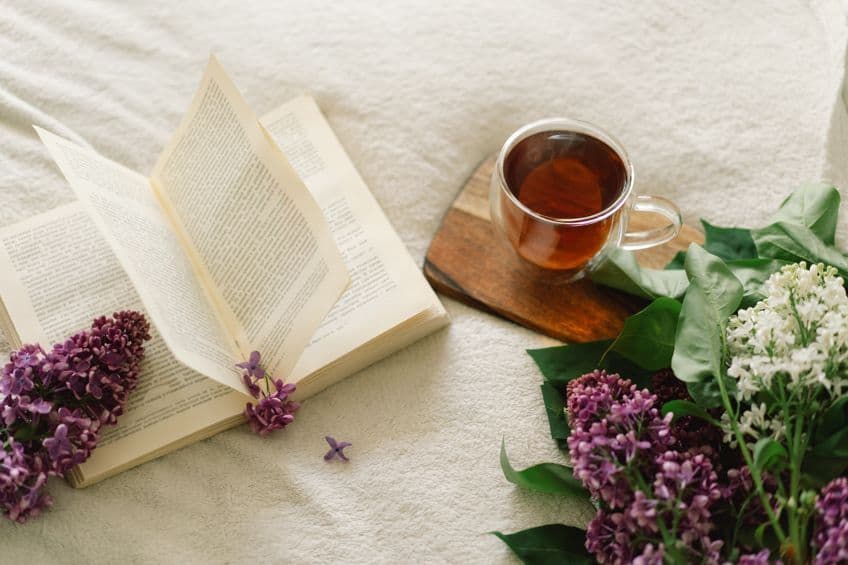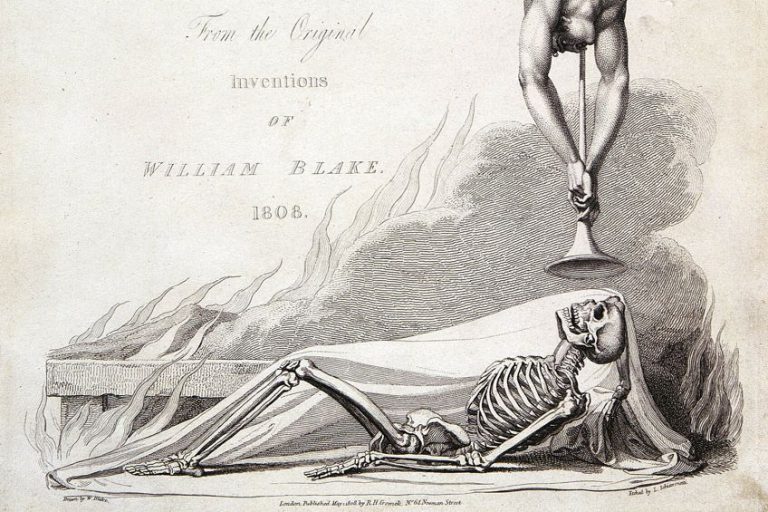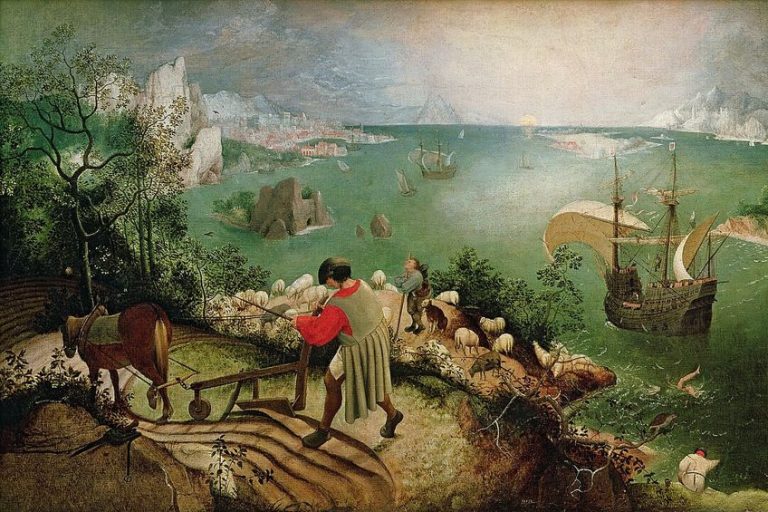Connotation in Poetry – The Art of Suggestion Through Words
There are so many different terms that one needs to know to have a robust understanding of poetry, and connotation is one of the most important of them all. That’s why I’ll be going over connotation in poetry by looking at a definition of the concept in more general terms before looking at how it can be used, how it differs from denotation, and a number of connotation examples in poetry to end things off. If you enjoy poetry but are unfamiliar with this term, this article should prove to be beneficial!
Table of Contents
- 1 A Look at Connotation in Poetry
- 2 Summary of Connotation in Poetry
- 3 A Definition of Connotation in Poetry
- 4 Characteristics of Connotation in Poetry
- 5 The Uses of Connotation in Poetry
- 6 The Difference Between Denotation and Connotation
- 7 A Few Connotation Examples in Poetry
- 8 Frequently Asked Questions
A Look at Connotation in Poetry
When it comes to something as integral to poetry as connotation, it can be very easy to explain the basics while difficult to explain the far deeper aspects of the concept. In the case of this particular examination of connotation in poetry, we will not be going particularly deep into how all one could analyze the various connotations that are found within texts, but we certainly can give a good overview to aid in understanding. So, that’s what we’re going to do!

Summary of Connotation in Poetry
We all know what connotation is, and we all know what it is in poetry. You may not be familiar with this particular term, but you do, on an instinctual level, understand connotation. I will list off a few connotation examples in poetry a little later to illustrate these ideas in more depth, but the basic idea is very easy to understand, and here it is:
- Connotation in poetry is the idea suggested by a word. This basically means that the connotation in poetry is not the dictionary definition of a word, but what that word means to us. So, green may be a color, but it represents
- Connotation in poetry is distinct from denotation. While connotation refers to what something means to us on a personal or cultural level, the denotation is the actual dictionary definition. Green is a color. That is all!
- Connotation in poetry has a wide array of uses. Connotation is all over the place and we will never have any hope of escaping it. All words have meaning outside of their pure dictionary definition, and so we can use connotation to suggest feelings, ideas, and so on, that are not covered by the denoted meaning of a word.
Connotation is not complex at all. Analyzing connotations found within a text can certainly become very complex over time, because we may need to justify certain connotations and our reading of them, but the basic idea is very simple and easy to understand.
Regardless of that, let’s go into it in more depth than we have so far.
A Definition of Connotation in Poetry
In very simple terms, what is connotation in poetry? Basically, it refers to the meaning that we take from a word rather than what a word technically means (for that, keep reading). So, the connotations that are found in a text are the meanings that we have created on a personal and/or cultural level. It is often easiest to explain things like this when we make use of an example.

Dogs are animals. They are specifically canines, and they are omnivorous, domesticated animals. This is what a dog actually is. However, that is not what a dog means to us, is it? We are all aware of the fact that a dog is man’s best friend. The dog represents, or connotes, loyalty, love, protection, joy, and whatever else. We generally see them as being positive, because connotations are generally positive, negative, or neutral.
That is what connotation is. It is not the actual technical meaning behind something, but the feeling that it evokes. It is what we think of when we think of that word. It is not what that word means in a dictionary definition sense. This also means that connotation is integral to metaphor in general and, by extension, with all poetry.
Characteristics of Connotation in Poetry
There are many different possible characteristics of connotation in poetry. Every single word has a different connotation that has come to be attached to it, and so it can be viewed in positive or negative ways, it is generally very subjective in its presentation seeing as you or I may have very different interpretations of the connotation of a word, it is context specific, and so on.
The main thing that we should keep in mind when it comes to connotation is that it is often harder to find than the denotation alone.
We all know that a jigsaw puzzle is a type of game that is meant to be played by arranging a series of differently cut blocks so that they can form a coherent image. We all know that, but what does that same jigsaw puzzle mean when it is placed within a certain poem or story? What does it now mean?
The Uses of Connotation in Poetry
There are many different reasons why a poet might make intentional use of connotation. Why a poet uses certain words and images forms part of the overall connotation of a text. We can find these meanings by analyzing and interpreting what we see. So, a poet might phrase something a certain way, such as by using terms that connote darkness, to create a mysterious atmosphere, or they might use words related to machinery and industry to create a mechanical atmosphere.

This can allow a poet to add depth to a poem, to influence the way that the reader perceives what is happening, create a certain kind of emotionality, and so on. Connotation is not entirely determined by the writer, but when a writer has a strong grasp of the language, they can easily determine which terms do and do not possess and/or contribute to certain connoted meanings. Which are meanings that may be desirable within a certain text.
The Difference Between Denotation and Connotation
The easiest way to see things is to view denotation as the opposite of connotation. Throughout this article, I have explained how connotation is the representation of something. A color may be a color, but in our minds, we see it as being a certain way that may not necessarily relate in a causal way with how we perceive it, such as red representing love. Denotation is the simpler meaning behind the text. What is red? It’s a color. It may represent something else, blah blah, but from a denoted perspective, it’s just a color.
We cannot have one without the other. All words have both denotation and connotation meanings attached to them.
Think of something as random and innocuous as a chair. It is a thing that you sit on. That is the denotation. But what does a chair represent? Well, it depends on where it is situated, doesn’t it? Put it at the head of a table and suddenly it means that the person who sits there is the most respected. Put it at the front of a room and make it ornate and suddenly it becomes a throne and represents royalty. Put it in the corner and stack stuff on top of it and it becomes that one chair that no one uses and instead represents disorganization. Connotation and denotation live in a relationship with one another. And it’s a very stable relationship because they cannot be separated.
A Few Connotation Examples in Poetry
There are so many possible connotation examples in poetry seeing as connotation is practically everywhere, but let’s try and scale things down a little so that we can check out at least a few instances of this concept to better understand it. We will only be examining three examples, but that should be enough to give a brief overview of how the idea of connotation in poetry can be taken a lot further.

Sonnet 18 (1609) by William Shakespeare
| Date Published | 1609 |
| Type of Poem | Shakespearean sonnet |
| Rhyme Scheme | ABABCDCDEFEFGG |
| Meter | Iambic pentameter |
| Topic | Beauty |
Sonnet 18 is one of the most famous poems that William Shakespeare ever produced, and it makes use of a comparison between a young, beautiful man and a summer’s day. The summer’s day is used because of its connotations with beauty, temperance, and joy. We have certain associations with good summer days, and by using it as a point of comparison, the speaker is able to transfer what we associate with the day with the person that they have fixated on.
Connotations like this exist throughout poetry.

The Sun Rising (1633) by John Donne
| Date Published | 1633 |
| Type of Poem | Inverted aubade |
| Rhyme Scheme | ABBACDCDEE |
| Meter | Irregular |
| Topic | The sun |
The Sun Rising makes use of a number of connotations, but one of the central ones is the sun itself. In this poem, the sun comes to be seen as an annoyance as it is seen as a “busy old fool” that interrupts the time the speaker has with his lover. This produces a certain negative connotation that the speaker has for the sun’s presence, and rather than being a wholly positive thing, the sun instead comes to be something that the speaker wishes they could do without.
This is just one of the ways that connotation in poetry can be presented to us.

Out, Out— (1916) by Robert Frost
| Date Published | 1916 |
| Type of Poem | Free verse poem |
| Rhyme Scheme | One |
| Meter | Iambic pentameter |
| Topic | Death |
Out, Out— is a poem about a very tragic death. In this case, it is based on a real death that Frost experienced in which a young child was killed in an accident involving a buzz saw. In this poem, the buzz saw comes to connote danger and the destruction of a life. It may be a very real thing in the real world, but in the language of the poem, we instead understand it as something very different, something that can only be a menace and a horror to those who have witnessed it.

There are so many different connotations to be found in poetry that it can be difficult to pin it down! We’ll never find every connotation because more of them could crop up at any time, but what we can do is use our understanding of connotation to better analyze and interpret the poems that we read. We all know that words mean far more than their dictionary definitions, but some of us try to pretend that everything in a text is purely surface-level. However, there is so much beneath the surface if only we would scratch and explore!
Frequently Asked Questions
What Is Connotation in Poetry?
In very basic terms, connotation refers to the ideas that are reflected in words. Essentially, it does not refer to what a word actually means, but rather the ideas that it evokes in us. For example, red is a color, but it represents ideas as diverse as love, violence, war, and passion. This can often be seen as the metaphorical meaning behind a word, and we classify connotations as being positive, negative, neutral, or somewhere in between. However, arguments can be made over any kind of definitive classification.
What Are the Characteristics of Connotation in Poetry?
There are many different characteristics of connotation in poetry. We can see how the connotation influences the emotional understanding of the ideas being explored, the tone, context, or how overtly/subtly an idea is expressed. Seeing as connotation is such a general term, it can mean a whole variety of things based on the specific connotations in a text. There is no singular connotation that applies to all texts.
What Is the Difference Between Denotation and Connotation in Poetry?
These two terms are seen as opposites of one another, and they both always exist side by side too. The connotation is the representative idea behind a word, such as food representing comfort. Denotation, on the other hand, is the dictionary definition of something, and so the denoted meaning of food is as edible substance used to sustain life
What Are Some Famous Connotation Examples in Poetry?
Connotation in poetry does not really relate to a single thing, but rather something within a text. So, we can see some connotations being things like the use of a summer’s day to mean beauty in Sonnet 18 (1609) by William Shakespeare, the use of the sun as an interrupting negative force in The Sun Rising (1633) by John Donne, and the use of a buzz saw to represent danger in Out, Out— (1916) by Robert Frost. There are connotations throughout poetry, and this is only a short list.
Why Do Poets Use Connotation in Poetry?
There are many different reasons for the use of connotation in poetry. It can, at a very basic level, be used to produce metaphorical understanding. Words do not simply mean what they denote; they instead mean so much more. When a rose is given as a gift, it is only special because of the human-made meanings that we have ascribed to a plant that only has a sweet scent and beautiful color for the purpose of plant reproduction. We have our own meanings attached to that smell and hue, such as human ideas of beautiful smell and romantic inclination.
Justin van Huyssteen is a freelance writer, novelist, and academic originally from Cape Town, South Africa. At present, he has a bachelor’s degree in English and literary theory and an honor’s degree in literary theory. He is currently working towards his master’s degree in literary theory with a focus on animal studies, critical theory, and semiotics within literature. As a novelist and freelancer, he often writes under the pen name L.C. Lupus.
Justin’s preferred literary movements include modern and postmodern literature with literary fiction and genre fiction like sci-fi, post-apocalyptic, and horror being of particular interest. His academia extends to his interest in prose and narratology. He enjoys analyzing a variety of mediums through a literary lens, such as graphic novels, film, and video games.
Justin is working for artincontext.org as an author and content writer since 2022. He is responsible for all blog posts about architecture, literature and poetry.
Learn more about Justin van Huyssteen and the Art in Context Team.
Cite this Article
Justin, van Huyssteen, “Connotation in Poetry – The Art of Suggestion Through Words.” Art in Context. February 12, 2024. URL: https://artincontext.org/connotation-in-poetry/
van Huyssteen, J. (2024, 12 February). Connotation in Poetry – The Art of Suggestion Through Words. Art in Context. https://artincontext.org/connotation-in-poetry/
van Huyssteen, Justin. “Connotation in Poetry – The Art of Suggestion Through Words.” Art in Context, February 12, 2024. https://artincontext.org/connotation-in-poetry/.









